#manuscript history
Text
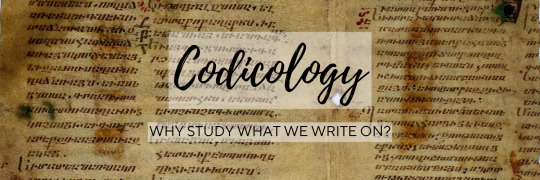
“The manuscript book isn’t only the necessary medium for the trasmission of ancient and medieval culture: it’s also a complex and dynamic object, which reflects, in its appearance and physical structure, the cultural, economical, social and political changes through the centuries.” - Marilena Maniaci.
Throughout history, humankind has always felt the need to communicate, and to fulfil that need has used a variety of recipients for their writing — organic, inorganic, of plant or animal origin… Before, and alongside, the well-known triptych of papyrus-parchment-paper were and are clay, shards of pottery, metals, fabrics, leaves, wood, bones…


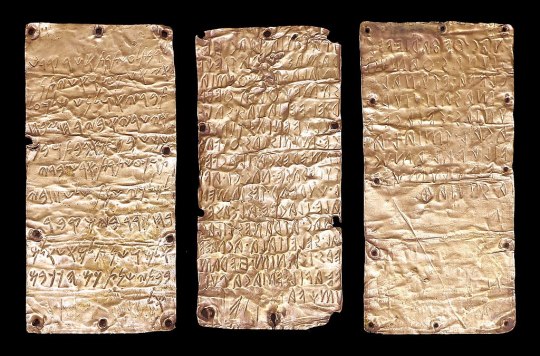
Any writing, in its materiality, is a two-faced coin. One face is that which can be easily (or not) seen, such as the text and the images. The other face is all that is not seen, be it inside the writing, such as the material aspects, the structure, the techniques, or outside the writing, such as the culture or socio-economic situation.
While philology and palaeography study the text and images are the interest of art historians, that hidden other face is the subject of research of codicology, particularly in its acceptation of archaeology of manuscripts. Codicology is a relatively recent branch of studies, which originates as an ancillary science to philology and palaeography and as such still lacks a unified method or mission, but in the aforementioned meaning of the term and for what concerns us, it can be defined as the study of the history of codices (sing. codex).
Codicology, then, studies the codex in everything that isn’t text and writing, and partially images (although all of these things give contextual information, and are taken into consideration). But what, exactly, is a codex?
A codex isn’t a book, it’s not even a scroll - at least, not necessarily. As defined by Marilena Maniaci a codex is “a container of information, mostly textual, but also visual and musical, in which the dimension of immaterial ideas interacts, in different and complex ways, with the materiality of the object.” More simply, a codex is any object consisting of a material which has been written on or which was meant to be written on and which has been bound or could have been bound.
A scroll is a codex, a book is a codex, but also ostraka (pottery shards) which have been tied together through holes, or a single and quite big piece of vellum which has been folded.
The three following images are all codices, as different as they may seem!


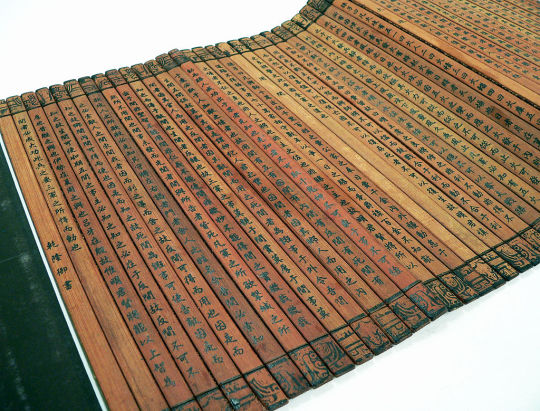
Codicology studies the materials a codex is composed of, the way it was produced, used, re-used, its history throughout the years, in whose hands it ended up and how its “adventures” influenced its physicality. These informations, seemingly of secondary importance, can give us interesting insights on the times the codex “lived” through.
#history chirp#history#material history#manuscript#manuscript history#medieval manuscripts#papyrus#parchment#paper#writing table#codicology#codex#medieval codex#book of hours#writing history
11 notes
·
View notes
Text
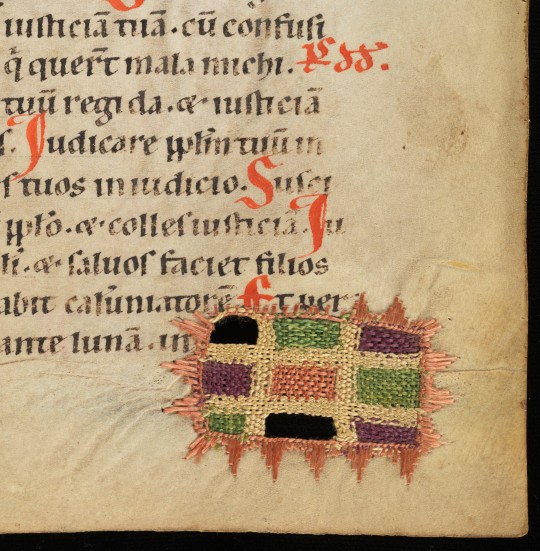
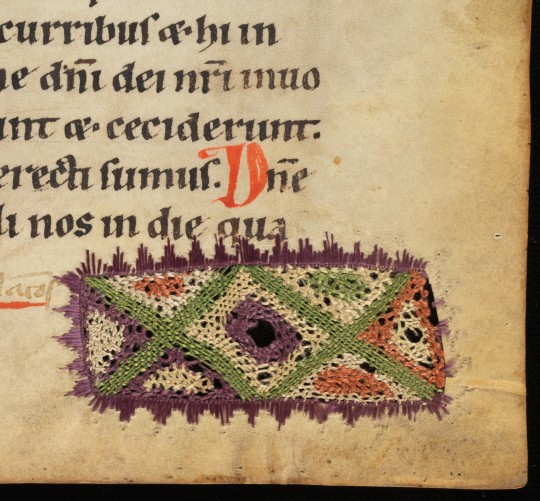

medieval parchment repairs
in a psalter, south-western germany, late 12th/early 13th c.
source: Hermetschwil, Benediktinerinnenkloster, Cod. membr. 37, fol. 19r, 53r, and 110r
#12th century#13th century#repairs#mending#medieval manuscript repairs#sewing#book history#medieval studies#medieval art#psalter
8K notes
·
View notes
Text
Do you have any tattoos? ⚓️ I have a bunch, so I was very excited to come across these 19th century tattoo flash books in the Winterthur Library – and they’re digitized! You can see them here 📚
6K notes
·
View notes
Text
I'd like to introduce you to LJS 57, a compendium of Astronomical text in Hebrew, written in Spain around 1391. It's an interesting combination of astronomy and astrology, and illustrates how the division between "science" and "not science" was not nearly so clear in the past as it is today. It has some fantastic illustrations of constellations!
🔗:
#medieval#manuscript#medieval manuscript#14th century#hebrew#astronomy#astrology#stars#constellations#illustrations#illuminations#diagrams#history of science#book history#rare books
4K notes
·
View notes
Text
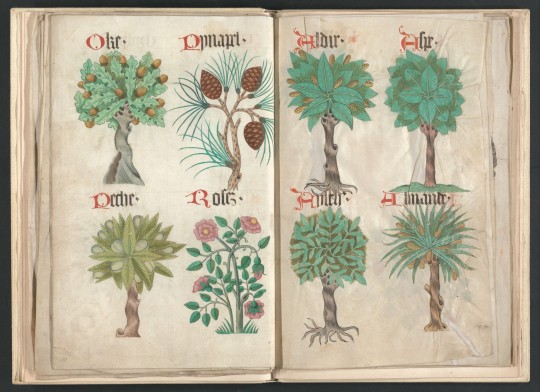
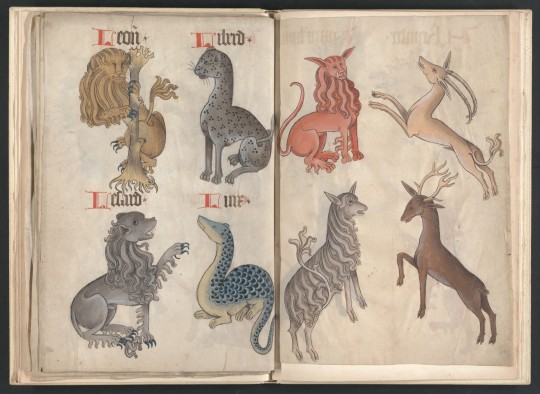


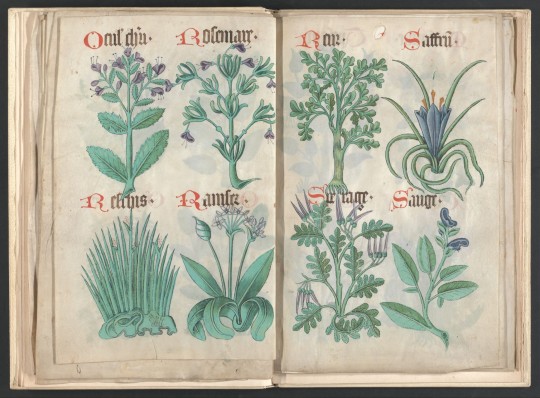

~ Helmingham herbal and bestiary.
Place oforigin/Published: Helmingham, Suffolk
Date: ca. 1500

5K notes
·
View notes
Text
Ever see a depiction of St. George and the Dragon? It's pretty fair to say if you've seen one, you've seen them all: Georgie on a horse stabbing a flailing dragon creature, princess piously kneeling in the background, vague landscape alluding to the homeland of the artist's patron.
The most varied part is the dragons. No one had a real definition for the thing, it seemed. For your pleasure and entertainment, I have ranked some medieval depictions based on how impressive George's feat seems once you see the dragon.
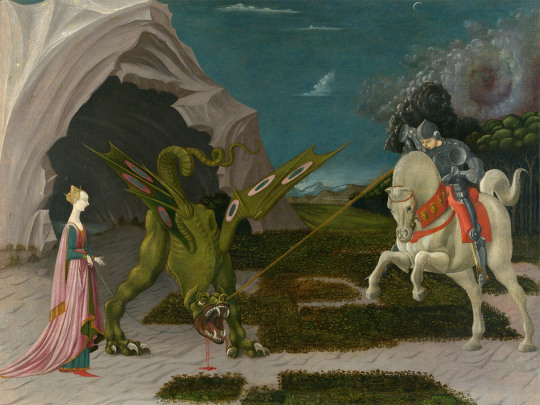
Paolo Uccello, 1456
This is a terrifying beast. The hell is that. Uccello was one of the first experimenters with perspective, so the thing also looks surreal, like it's taking place on Mars, or a Windows 95 screensaver. I would not want to fight that, I would not want to be tied to that. (Sometimes the princess is tied to the dragon for some reason.) 10/10
Horse thoughts: Maybe if I look at the ground it will be gone when I look up
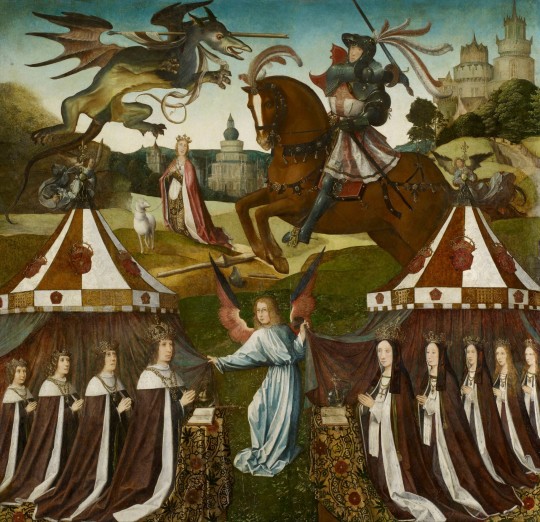
Unknown artist, c. 1505
This is a rare change of form for the dragon; it's the only one I've seen actually flying (or at least falling with style). It doesn't look particularly deterred by the spear through its throat, either. Also, George looks appropriately nervous. On the other hand, it hasn't got teeth, it seems to be fuzzy rather than having scaly armor, and George is bolstered by his army of Henry VII and his children, most of whom definitely didn't actually die in infancy. Still, wouldn't want to fight it, wouldn't want my pet sheep near it. (Sometimes the princess has a pet sheep for some reason.) 9/10
Horse thoughts: I am so glad I wore my mightiest feather helmet for this
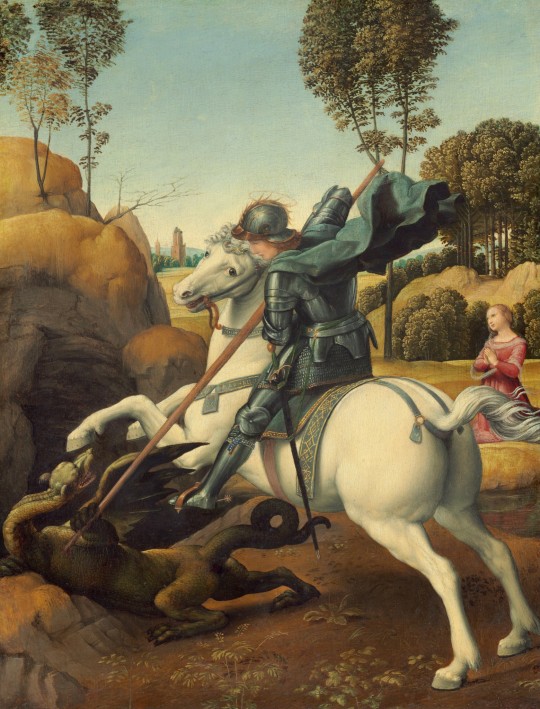
Raphael, 1505
We are coming to Dragons With Problems. This guy looks about comparable in size to George, and does have wings, but doesn't seem to be using these things to his advantage (and has he only got one wing?) And how does he deal with the neck? He does have a comically small head, but holding it up with such a twisty neck seems complicated at best. But most egregiously, he is doing the shitty superheroine pose where he is somehow simultaneously showcasing his chest and his butt, with its unnecessarily defined butthole (more on this later) (regrettably). 8/10 bc it's Raphael
Horse thoughts: AM I THE BESTEST BOI? AM I DOING SUCH A GOOD JOB? WE R DRAGON SLAYING BUDDIEZ

The Beauchamp Hours, c. 1401
We had a spirited debate about this one at work. Again, the dragon has gotten smaller, and this one hasn't got even one wing. He's basically a crocodile. So the debate became: would you want to fight a crocodile if you had a horse and a pointy stick? Would the horse trample the animal, who can't get on its hind legs, or freak out and throw its rider? Would the pointy stick be enough to pierce the croc's thick hide? In this case, George seems to be controlling his horse and putting his pointy stick in the dragon's weak spot, so we can be impressed by his skill and strategy. However, his hat is dumb. 7/10
Horse thoughts: Dehhhh
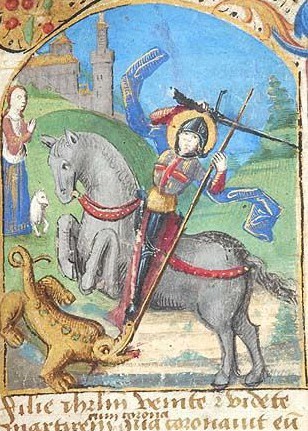
Book of Hours, c. 1480
Here we have the same kind of croco-dragon, but George's focus on his strategy has gone out the window. He's flailing around, not even looking at his target, he's about to lose his pointy stick, he hasn't got a hand on the reins, and his sword seems to only be poking the invisible dragon over his shoulder. All he's got going for him is that his hat is slightly less dumb. 6/10
Horse thoughts: Yay, new friend! Come play with me, new fr- what is happening
Final dragons put behind this Read More for your safety:
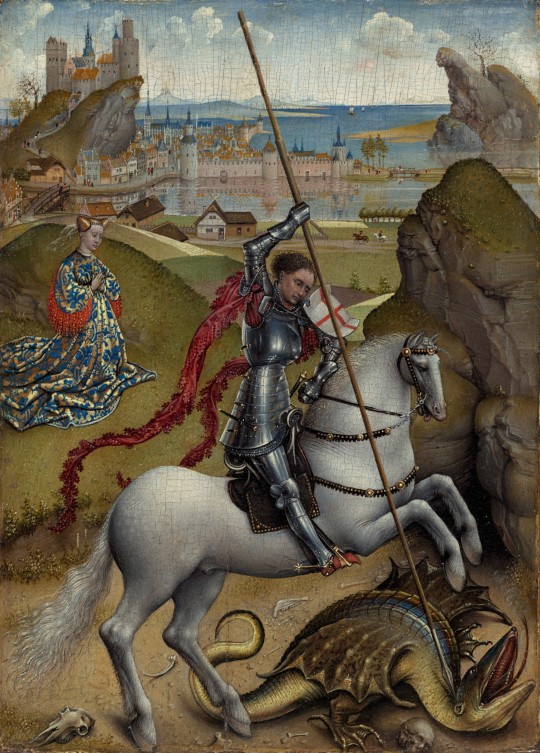
Rogier van der Weyden, c. 1432
I'm thinking this guy is at least semi-aquatic. Webbed feet, wings that seem more like fins, bipedal but top-heavy, jaws that seem more for scooping than biting. Maybe she's crawled up here from the nearby body of water to lay her eggs, and this is all a big misunderstanding. Moreover, George's dagged sleeves seem entirely impractical for the situation. 5/10
Horse thoughts: i got my hed stuk in a jar and now it is this way forever

Unknown artist, c. 15th century
I hate this. I hate everything about it. Why has it got human eyes and teeth. Why is its nose melting. Why has it got a dick on its face and balls under its chin. The fin/wings are back but they look even more useless. Also, George is shifty as hell, schlumped over in his saddle with his bowler hat thing over his eyes. The baby dragon at the bottom eating some hapless would-be rescuer is kind of metal. 4/10 at least the thing is gonna die
Horse thoughts: I Have Smoked So Much Crack

Book of Hours, c. 1450
Remember what I said about the buttholes? First, sorry. Second, yeah, we're back to that. I'll admit this one is less about the danger from the dragon itself than the very specific choices the artist has made. They didn't need to do that. It's a lizard. They don't even have. And it's like they had an orifice budget and they skipped an exit wound for the spear to focus. Elsewhere. It's so detailed. And George had an even dumber hat. 2/10 take it away
Horse thoughts: I Have Smoked So Much Weed
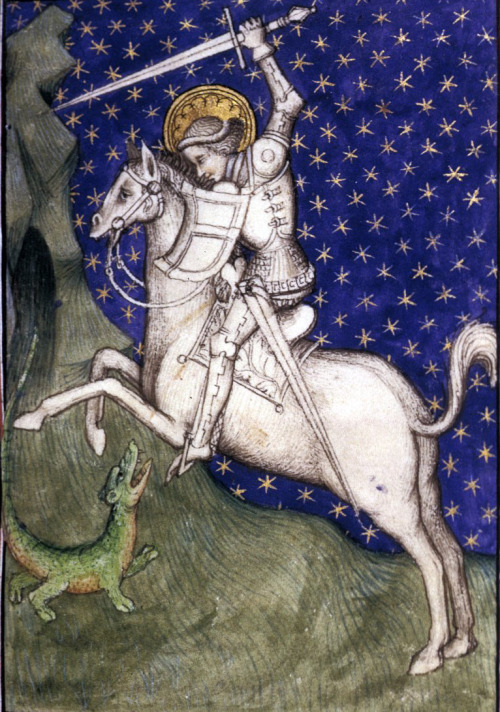
Book of Hours, c. 1415
This is just bullying. There isn't even a princess. That is clearly an infant. Look at that smug look on George's face as he swings his sword that's bigger than the whole little guy. This is the equivalent of when DJT Jr. hunted those sleeping endangered sheep. 1/10
Horse thoughts: ....yikes
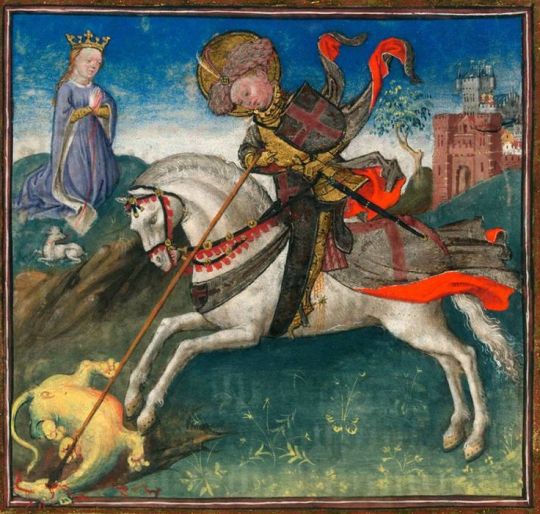
And this is the previous one, but now the baby dragon is cute. He's chubby. He's got toe beans. He's Puff the Magic Dragon. His eyes have already gone white, implying that George is just kicking its corpse around for funsies. What's the difference between the dragon and the lamb in the background? That the dragon is dead, like our innocence. This George is truly deserving of the dumbest hat of all. 0/10 plus one more butthole for the road
Horse thoughts: Perhaps it is we who are the buttholes.
#art history#nonsense#hot takes#I am doing a St. George painting and have been wading through reference material#manuscript#fuck me I didn't notice van der Weyden managed to sneak a butthole in his too#the definitive list#when knighthood was in flower
8K notes
·
View notes
Text

Le Chansonnier Cordiforme, c. 1470, music manuscript
― facsimile by Vicent García Editores of Valencia, Spain
#art history#medieval#medieval art#manuscript#illuminated manuscript#music manuscript#1470s#1470s art#le chansonnier cordiforme#Jean de Montchenu#Bibliothèque de France#Vicent García Editores#ah
4K notes
·
View notes
Text

Incipit of the Gospel of Luke (Quoniam quidem multi...), fol. 188r from the Book of Kells, created in an Irish or Scottish monastery ca. 800. Now in the Library of Trinity College, Dublin.
#art#art history#Book of Kells#Irish art#Celtic art#illuminated manuscript#Gospel of Luke#incipit#medieval art#9th century art#Trinity College Dublin
983 notes
·
View notes
Text
list of medieval literature with links to read.
i’ll continue to update with more texts, better scans, & different editions. enjoy!
#arthurian legend#arthurian legends#arthuriana#ulster cycle#history#medieval literature#med lit#illuminated manuscript#illuminated manuscripts#translations#translation#english translations#english translation#resource#resources#book recommendations#book reccs#arthurian preservation project#my post
1K notes
·
View notes
Text
Percy Shelley doodling while helping his wife edit the draft of her first novel, Frankenstein; or, The Modern Prometheus (1818):




The idea for the story was devised in mid-June 1816. The draft shown here was written between August and December 1816, and it was revised until April 1817. The book was published January 1st 1818 when Mary was 20-years-old. She was only 18 when she conceived the story, as her 19th birthday was on August 30th 1816.
Source: The Shelley-Godwin Archive online
#me 🤝 shelley -> relentless doodling#back at it again w the happy little trees#literature#english literature#lord byron#romanticism#aesthetic#dark academia#percy shelley#history#mary shelley#editing#frankenstein#Frankenstein; or The Modern Prometheus#writing#poetry#literary history#manuscript#manuscripts#bodleian library#shelley#doodling#scribbles
2K notes
·
View notes
Text


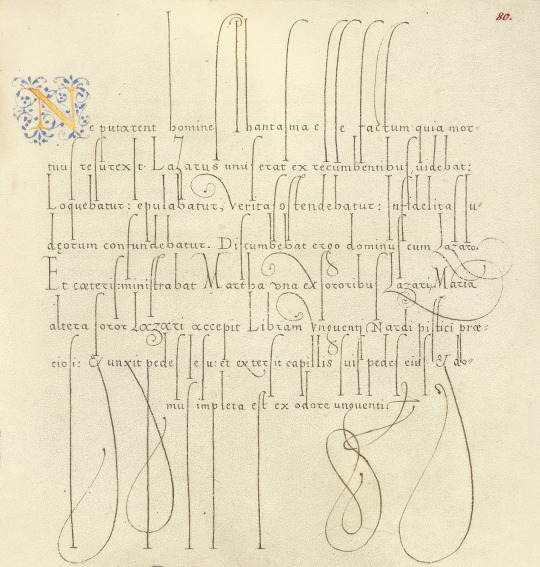
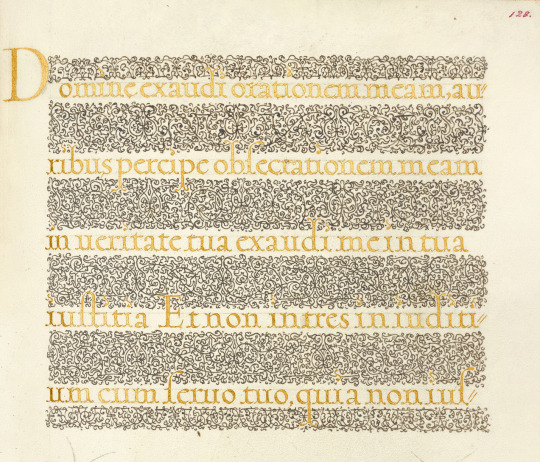


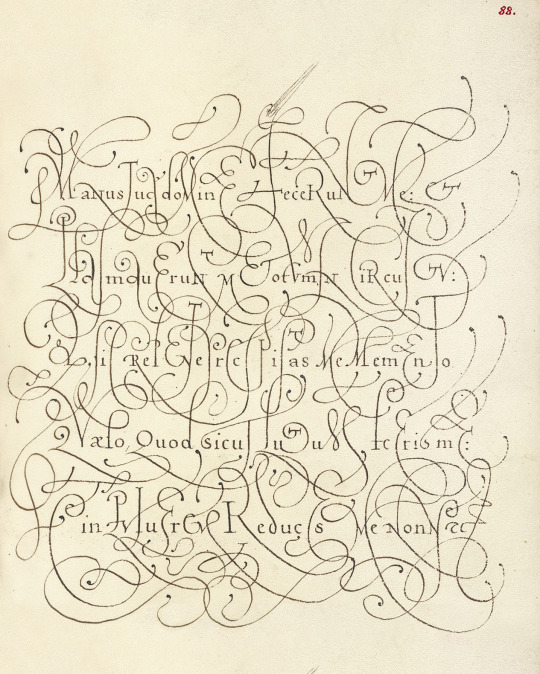
manuscript and calligraphy,
Joris Hoefnagel Flemish (1542-1600)
#typography#manuscript#16th century#17th century#history#calligraphy#art#Joris Hoefnagel Flemish#LONG POST
1K notes
·
View notes
Text


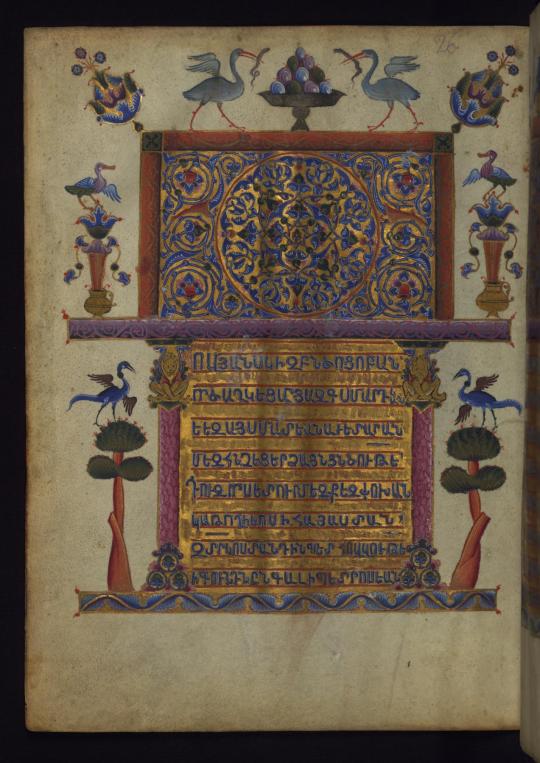




The T'oros Roslin Gospels, Armenia, mid 13th century
from The Walters Art Museum
405 notes
·
View notes
Text


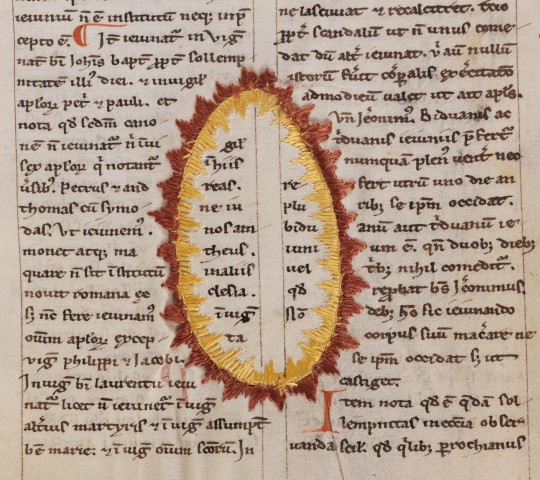
more medieval manuscript repairs
all from a miscellany containg thomas de chabham's "summa poenitentialis", southern germany (?), first half of the 13th c.
source: Basel, Universitätsbibl., B X 1, fol. 56r, 67r, and 71r
#since y'all liked them so much last time :)#here i love how you can tell the mending was done BEFORE the script was added#13th century#medieval manuscript repairs#book history#visible mending#parchment#medieval art#thomas de chabham#summa poenitentialis
4K notes
·
View notes
Text
Little Isaac Bawden was quite the calligrapher! 🖌️ This 1763 arithmetic book shows off his flourishing skills. The later 1880s Golden Gems of Penmanship, published during the calligraphy revival of the 19th century, allows us to see how Isaac learned this art! Isaac’s book has been digitized, and you can find it here 📖
(Doc. 743 at the Winterthur Library)
931 notes
·
View notes
Text
LJS 64 is a book of diagrams, many with moving parts, designed to accompany the work Theoricae novae planetarum by 15th-century Austrian Georg von Peurbach, who is considered one of the first modern astronomers. He was particularly interested in simplifying the Ptolemic system (which places the Earth in the center of the solar system). The diagrams in the book demonstrate increasingly complex planetary motion.
🔗:
LJS 64 was recently featured in #CoffeeWithACodex, you can watch the complete 30 minute video here:
#medieval#renaissance#manuscript#volvelles#diagram#diagrams#illustrations#astronomy#astrological#science#history of science#book history#rare books#16th century
892 notes
·
View notes
Text
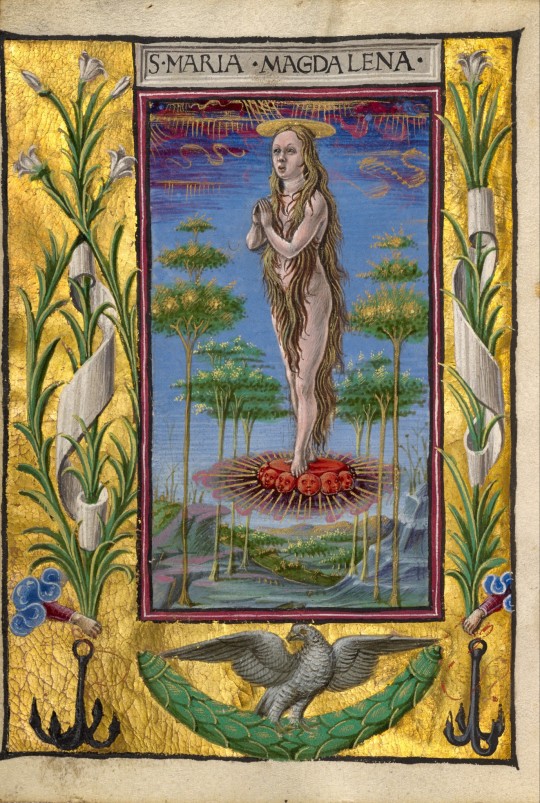
~ Mary Magdalene Borne Aloft.
Artist/Maker: Taddeo Crivelli (Italian, died ca. 1479, active about 1451-1479)
Date: ca. 1469
Place of origin: Ferrara, Emilia-Romagna, Italy
Medium: Tempera colors, gold paint, gold leaf, and ink.
#history#museum#15th century#15th century art#middle ages#illuminated manuscript#illuminated#book of hours#folio#manuscript#mary magdalene#maria magdalena#Taddeo Crivelli#getty#ca. 1469
599 notes
·
View notes